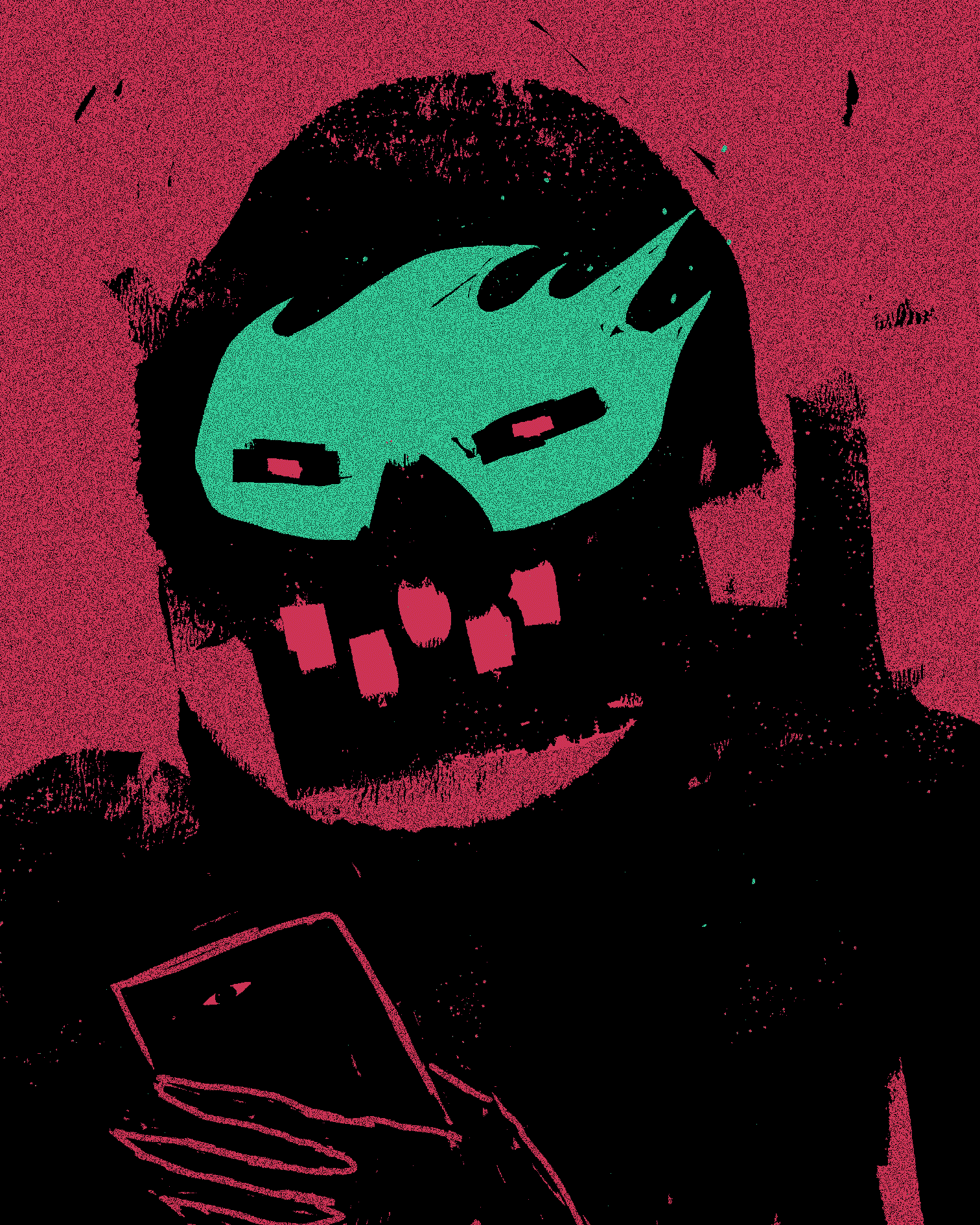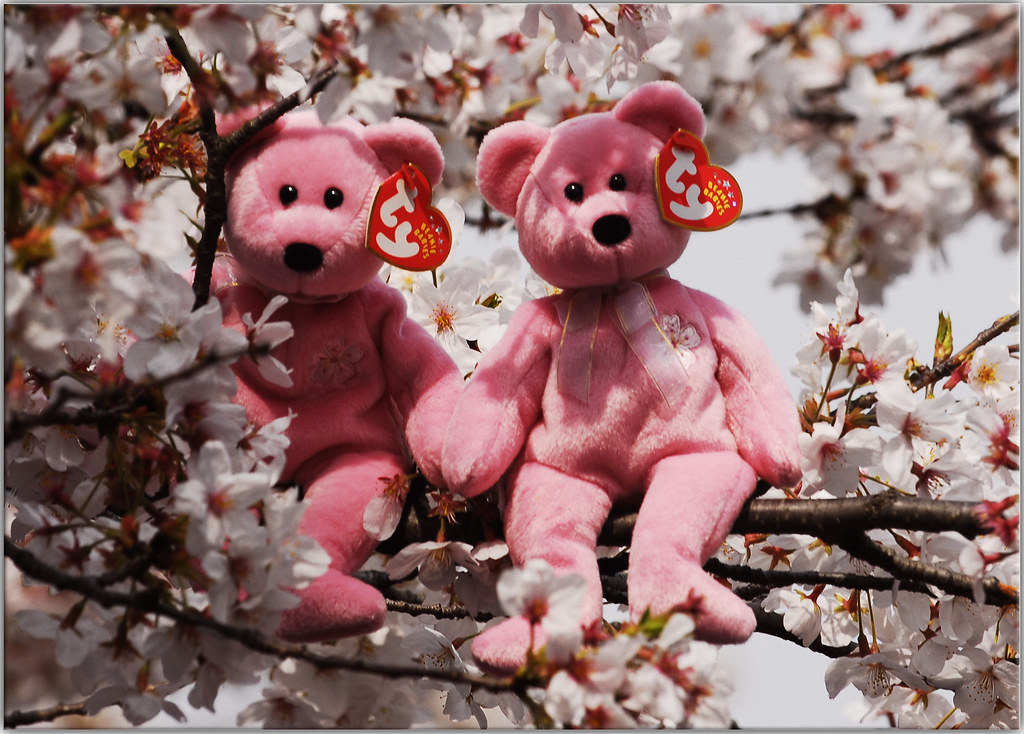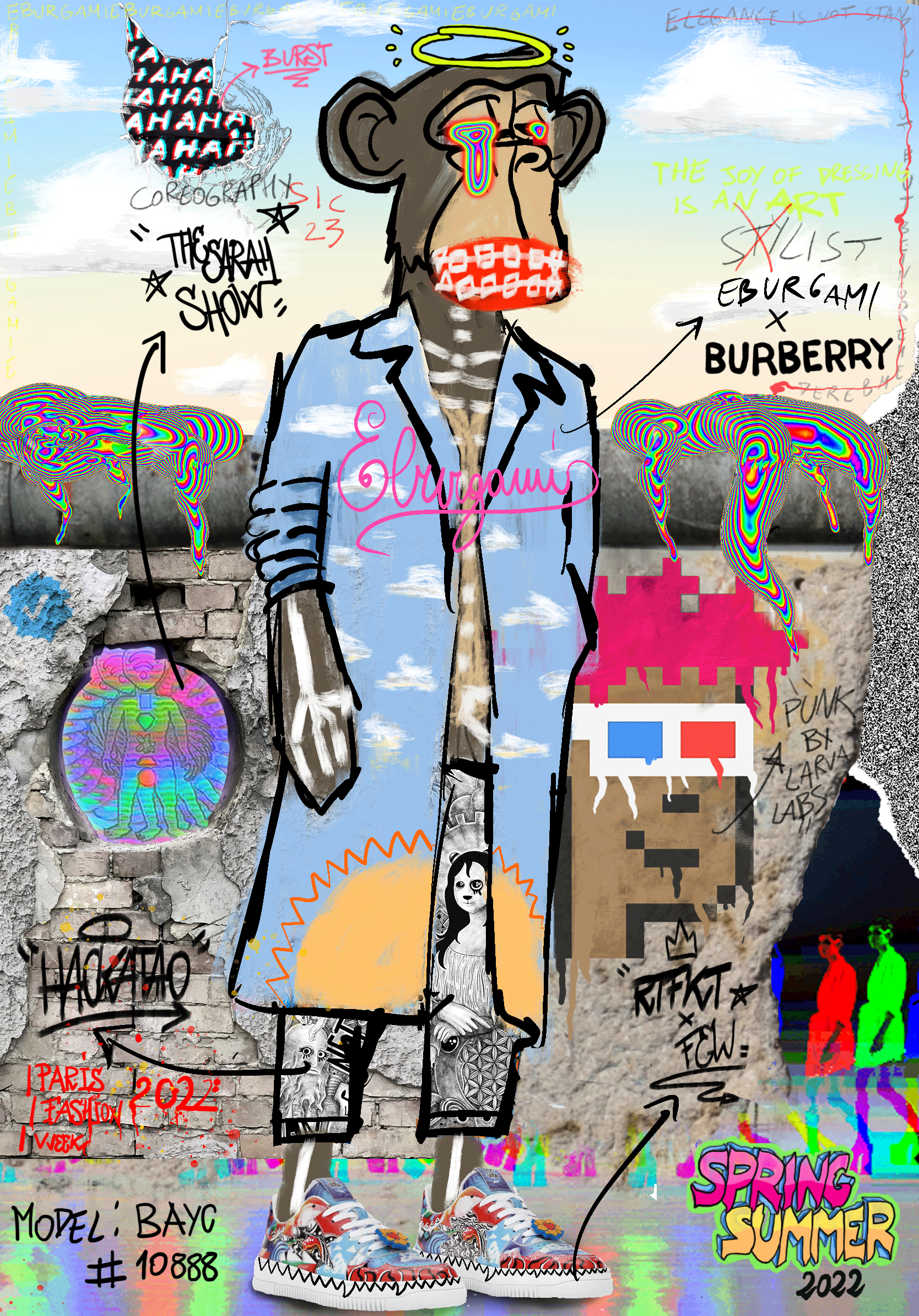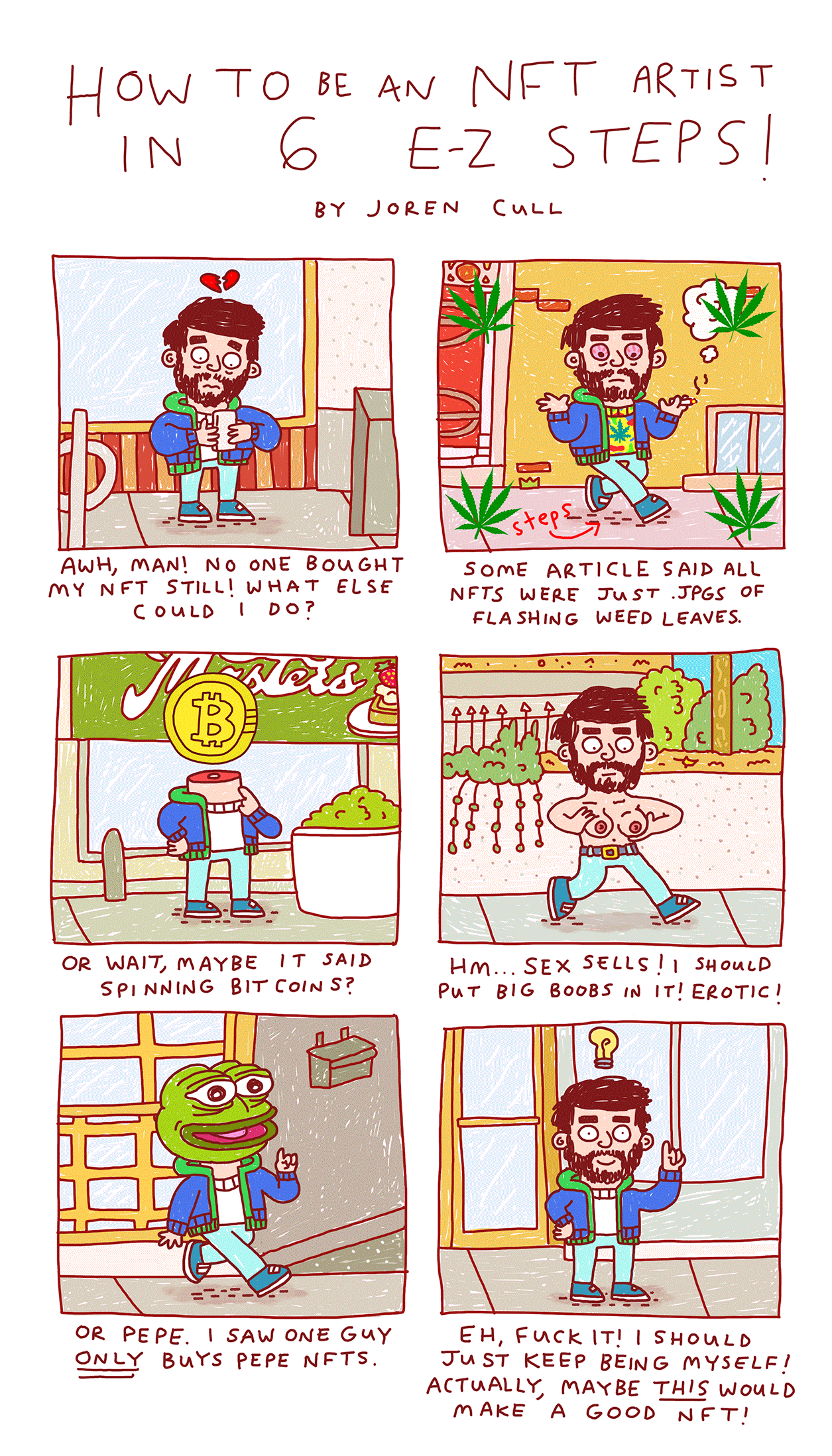
Above: “I DON’T GET IT, IT’S JUST A JPEG” by @andy
The people vs. NFTs
People fear change. It’s simple: change is scary. I mean, think about it. If things stop being the same, somehow evolve and turn different, that’s a frightening proposition. (Why can’t things just stay the same!?)
It happens in every generation. And the media is quick to pounce on what’s new that they just can’t quite grasp.
In the early 1900s, newspapers attacked the Cubist movement because it challenged Renaissance-era standards of linear perspective. When Jackson Pollock and the abstract expressionists popped onto the art scene, Old Man Media screamed about the paintings: How hard is it just to splatter some paint on a canvas? That’s not art–a child could do that!
Once again, we are experiencing the fear of change.
Mainstream media looks for any excuse to bash NFTs and people who are into them. The media flavor-of-the-day is to try to smear the NFT space into looking ridiculous, or like a scam, or simply some crazed fad for elitist crypto bros. Why? Because things are no longer the way they were in 2005 (or 2004 for that matter) – and the status quo feels threatened.
In those ancient days of NFTs (yes, January 2021) CryptoPunk #2890 sold for $761,889. Then, a collector tried to inflate the price of their CryptoPunk #9998 with a flash loan, which was easily viewable on etherscan. But the media conflated these two sales, one an honest purchase and the other a scam, and they went bonkers on the entire NFT ecosystem, saying things like:
No artistic integrity or ingenuity needed — no one cares about what these .JPGs look like, all that matters is that they’re attached to an intangible dollar sign. How exciting.
— Jake Silbert in an article for HIGHSNOBIETY
Astute naysayers keep mentioning that money laundering is behind what they only see as ‘juvenile pixelated art’ creations. And let’s not forget their oft-used battle cry: How can you own something you can’t hold and that anyone can copy?
Such a question is our era’s version of, “Is a Jackson Pollock painting a real work of art?”
So, why all the haters? Why don’t people trust NFTs? Why is public perception structured the way it is? To answer these questions, let’s look at the tropes thrown around by the uniformed media.
The Tired Beanie Babies Comparison
Have you seen that new HBO documentary: Beanie Mania? People in the ‘90s went batshit scooping the toys up. Beanie Babies were the first collectable sensation spawned by the internet via AOL chat rooms and the like. In 1997, eBay handled $500m worth of Beanie Baby trades in secondary Beanie sales.
Those outside the Beanie Baby subculture couldn’t really understand the $600,000 value attached to Nana the Monkey. Collectors were obsessed and bought specific Beanie Babies for insane amounts of money–as a financial investment–on the secondary resale market. And then (spoiler alert), the market value dropped; people went bankrupt investing in Beanies in what became known as the “Great Beanie Fallout.”
So naturally, when it comes to NFTs, mainstream media outlets looooove to make the Beanie Babies comparison. (Back in the ‘90s, I bet scoop reporters couldn’t resist comparing Beanie Babies with the rise and fall of Garbage Pail Kids.) It’s easy for the media to pass off NFTs as another ridiculous collectable fad that will surely tank because, as we all know, NFTs are nothing more but the digital world’s version of plush collectable toys for 2022… And, of course, NFTs’ value ends there because they have no utility, depth, or purpose, right?
So is history repeating itself?
If you do a Google search and type in the words “NFTs” and “Beanie Babies,” a slew of articles pop up that amount to a whole genre in itself. Stack the titles of the articles together and you can bask in the aesthetic riches of something akin to a junior high schooler’s found poem:
“Two Beanie Babies Sittin’ in a Tree…” by Extra Medium
Mainstream sites usually assign a staff writer to hate on the NFT world with this angle. Authors of these “insightful” articles tend to make the same sorts of comparisons trotting out historical nuggets like the Dutch tulip craze of the 1630s and the dotcom bubble of 2000 for good measure.
The Beanie Babies/NFT comparison caters to a skeptical public with the message: Don’t worry, folks, there is nothing to see here. NFTs are a one-dimensional craze that’s propped up by a community of collectors who trade, catalog, and hype up their passion. Now just relax, sit tight, and watch them fall on their face faster than you can say the value demise of Halo The Bear.
NFT Scams and Rug Pulls
The concept of NFT blockchain ownership, i.e., a digital certificate of authenticity that contains the web address and ownership information of the original copy, baffles a large portion of the mainstream media – who write it off as a scam. People of this ilk can usually be trusted to pepper their broadsides with questions like: Why would you pay so much for a JPEG when you can just right click save and make a copy of an NFT? And what prevents you from stealing NFT art and selling it as their own? Blabbity blah blah…
For the time being, NFTs aren’t regulated. There have been cases of artists seeing their work show up as NFTs they did not mint themselves, and then put up on some sketchy auction site, the dubious sellers vanishing into the ether.
Doubting Thomases believe that NFTs and Web3 are some type of multilevel-marketing grift, especially with the dizzying appreciation in value of digital art and the sudden rise of millionaires looking for investment opportunities to grow their newfound wealth. So, when a scam pops up, and the concept of NFT ownership can be challenged, the exception becomes the rule. Consider Evolved Apes, a pure Bored Apes knockoff. (No, that wasn’t the crime.) Around the time of the Evolved Apes release last October, buyers were promised that the NFTs would have a unique ape design to be used in a proposed blockchain fighting game, where winners would receive crypto rewards. The catch: The sale of the NFTs were funding the game–which was said to be still in development.
Shortly after selling the NFTs and raking in roughly $2.7 million, the developer (who went by the name “Evil Ape”) vanished with the crypto. The metaphorical rug was pulled and those who bought the NFTs were left with a mere JPG whose sole utility was as a reminder of the scam.
And rug pulls don’t just happen with hackneyed NFT ape ideas; they also happen with hackneyed NFT kitten ideas.
Last November, there was some Twitter NFT buzz when @CoolKittensNFT announced a project that would feature drawings of kittens (not just one – but thousands of drawings). How could one not be lured in by this scam? Obviously, drawings of kittens are a rare entity in the NFT world. Plus, the project was called “Cool Kittens,” a name so original that it was obviously incubated in a high-level think tank such as the Brookings Institute.
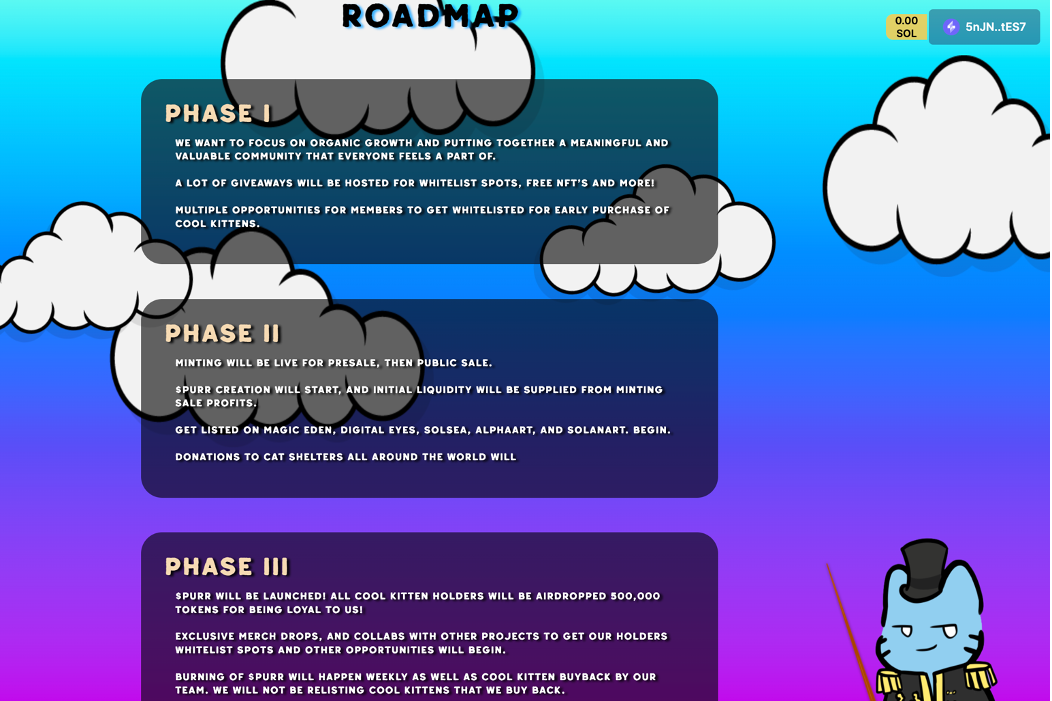
Original road map from the “Cool Kitten” developers
According to Slate: “Purchasers of Cool Kittens NFTs were promised three things: an electronic token with cat art, a purpose-built cryptocurrency called $PURR, and membership in a Cool Kitten DAO.”
2,216 Cool Kittens were minted on the Solana blockchain–and went up for sale at $70 a pop. Within hours, the Cool Kitten NFTs raked in $160,000 in crypto.
There were promises of a big marketing campaign and grand distribution of the boutique cryptocurrency – for Cool Kitten NFT holders. But quicker than you can say Sammy McScammy – people were scammed, the founders vanished into the ether, and the specialized Cool Kittens chatroom was gone. Holy rug pull!
Both Evolved Apes and the Cool Kittens scam painted the NFT space as an anonymous, yet villainous Web3, world where a façade of hype can be manufactured through a creole of chatbots and paid Twitter followers. It doesn’t take much imagination to see why the media jumps on such examples to player-hate on the entire space.
Half-Baked Ideas & The Crypto Bro Dune Sale
Crypto bros like to appear smarter than us. Except when their antics prove different–and one half-baked idea makes the whole NFT space look completely bonkers.
This was the case when a bunch of crypto bros formed a DAO and bought one of Alejandro Jodorowsky’s rare “Dune” bibles filled with the script, storyboards, and concept art the filmmaker used as a blueprint for his ill-fated attempt to adopt Frank Herbert’s novel in the 1970s.
Jodorowsky’s “Dune”
Spice DAO raised $2.9 million to purchase the “Dune” book at an auction. Soban Saqib of Spice DAO, told Buzzfeed after the sale: “One idea is to make an animated film inspired by the volume. Another is to hold frequent IRL viewings where enthusiasts can see it for themselves.”
Sounds great – but there was a huge catch…
According to popular opinion, Spice DAO got scammed; but in reality, they didn’t do research into what they were actually buying. This wasn’t a one-of-a-kind “Dune” book; multiple copies were made to share with Hollywood studios to help sell the movie idea. One such copy sold three years ago for $42,500. So, instead of being a one-of-a-kind book; it was just a very rare book.
If Spice DAO would’ve dug a little deeper, they would have discovered that the contents of the “Dune” book are already public–it was scanned and photographed in 2021–and is available online for free. (Did Spice DAO not bother to do a Google search?)
An entity like Spice DAO can’t buy the “Dune” book for the purpose of producing an animated series. That’s as ridiculous as buying a rare copy of a “Catcher in the Rye” and thinking you’ve nabbed the movie rights because of that. (Did Spice DAO not bother to Google copyright law?) If their goal was to make an animated series, the Spice DAO would have done better to put their money into purchasing the rights.
But the media loves this type of Schadenfreude. The internet was swarmed with stories with titles such as: “Crypto Losers Buy Copy Of Jodorowsky’s Dune, Have Played Themselves.” And yet another reason to doubt crypto was added to the history books.
Celebrities and the NFTs They Buy
Celebrities seem to flock to the most obvious, non-challenging NFTs and the media latches onto this as if NFTs offer nothing more than another investment vehicle for the already wealthy. And nothing could be worse in the history of celebrity NFT public relations than that extremely annoying Paris Hilton appearance on the Jimmy Fallon show (I know, it’s called “The Tonight Show” but I’m so annoyed by this appearance that I can’t even think straight.)
image caption
The hotel heiress-turned-reality star sat down with Jimmy partially to promote her new NFT drop that’s based on a collage of her and her husband Carter. (Hmmm?) The appearance, which is on the Tonight Show YouTube Channel is titled: “Paris Hilton Schools Jimmy on NFTs.” That’s right, Paris is framed by Jimmy as an NFT expert.
Jimmy points out that Forbes (though it was actually Fortune) had named Paris as one of the top influential people in the NFT space, and tells Paris that she was the reason he jumped into the NFT world – because, he too, had bought (wait for it…) a Bored Ape NFT.
Jimmy holds up a piece of cardboard adorned with the Bored Ape that Paris owns–and spent $216,000 on–to awkward, prompted audience applause. Jimmy then holds up a Bored Ape that he bought that reminds him of himself because it wears a striped shirt and he, too, sometimes wears striped shirts. His admission is greeted by more awkward applause from the audience for whom I’m sure these exorbitant purchases look like nothing more than cheap cartoon cutouts.
“You taught me what’s up, and then I bought an ape,” Jimmy tells Paris. And then in a marketing move à la Oprah–but without the excitement–Paris gives an NFT to EVERYONE IN THE AUDIENCE, which is the aforementioned collage of her and her husband Carter. The audience further smatters the sequence with a series of unspirited claps; surely they’re a little befuddled by what they are getting (is it the cartoon print backed on cardboard?).
A fiasco like this leaves your average viewer thinking there’s not much more to the NFT space than Bored Apes on black cardboard – leaving all involved unexcited about the space; as well as Twitter users to say the sorts of things that only they are clever enough to come up with when something goes horrifically wrong.
Which leads us to….
Celebrities and the NFTs They Create
If dumb celebrities buying NFTs sometimes makes the space look bad, it only gets worse when dumb celebrities put out their own NFTs.
Yes, when celebrities aren’t trying to buy Bored Apes – they are creating their own NFTs. And when I say “create,” I don’t mean “create” – for the most part they’re signing off on someone else’s less-than-inspired artwork (like when a celebrity opens a restaurant – they aren’t in the kitchen cooking up the chicken steaks).
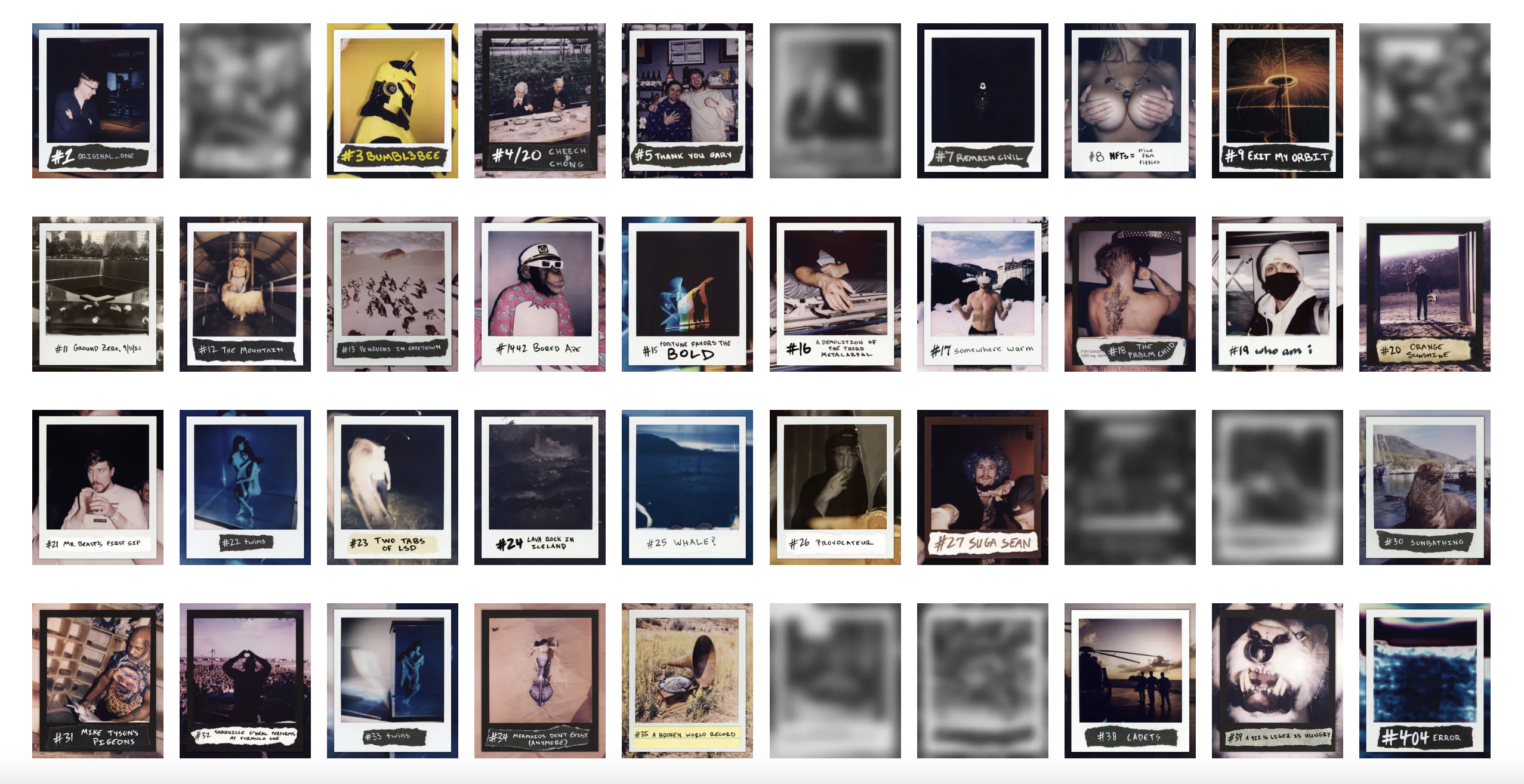
Logan Paul’s “99 Originals”
Look at Logan Paul – better known as “the most annoying man in history.” (Or is that Jake Paul?) Paul was accused of using Adobe Stock images and photoshopping them into part of his CryptoZoo NFT project.
Twitter sleuth Coffeezilla warned: “DON’T SUPPORT THIS CLOWN PROJECT. My guy is literally ripping off stock photos, and their ‘admin’ Ben Roth is lying about it.” Coffeezilla presented several Adobe stock animal images – alongside their doppelganger CryptoZoo counterparts.
“These guys are so predictable,” Coffeezilla stated. “How to make millions of dollars with NFTs? Step 1. Have fame. Step 2. Have Photoshop. Step 3. No shame. Step 4. Profit!”
This type of creative laziness and image theft not only makes Paul look bad; it makes the entire NFT space lok bad. It leads the media to think that NFTs are nothing more than a means for celebrities such as Melania Trump to make some quick $$$.
And, oh Lordy me….it didn’t help matters that Melania Trump was the one who ended up buying the Melania Trump NFT, adding speculation that bad celebrity NFTs are self-indulgent to the point of near-psychotic. According to Motherboard, “The $170,000 purchase of an NFT collection auctioned by Melania Trump was made by the entity that originally put the NFT up for sale…” Witness here a classic case of pump-and-dump (pushing up the price of a valueless entity – so the next Melania Trump NFT outing appears to be worth substantially more). Inevitably, rare case scenarios such as this elicit plenty of handwringing from the media. No wonder MSN ran an article from The Telegraph that harumphed: : “These figures…are using their fanbase like a jewelry store during a smash-and-grab. They don’t care if they leave the space totally trashed as long as they get their money.”
Conclusion
So, what have all these NFT haters gotten wrong?
What they fail to mention is how NFTs have completely shaken the foundations of the art world. No longer do artists need the old-guard gatekeepers that run art galleries to get their work out there. NFTs have cut out those who weren’t involved with the creation of the art to sell a collection, while DAOs now allow people to buy assets collectively without having to shell out a big chunk of money. Plus, the whole potential of what NFT utilities have to offer will unlock great opportunities for both businesses and individuals.
As we are now watching the paint splatter dry against the canvas–every generation has its cynical is-that-really-art moment–let’s take a second to think about the benefits that came from each artistic and technological shift in history. It’s time for skeptics to look up and admit that change is scary, but it’s also time for all of us to figure out how we can be a part of the change, to shape it, and to move the conversation forward, not back.

Harmon Leon is the the author of eight books—the latest is: 'Tribespotting: Undercover (Cult)ure Stories.' Harmon's stories have appeared in VICE, Esquire, The Nation, National Geographic, Salon, Ozy, Huffington Post, NPR’s 'This American Life' and Wired. He's produced video content for Vanity Fair, The Atlantic, Timeline, Out, FX, Daily Mail, Yahoo Sports, National Lampoon and VH1. Harmon has appeared on This American Life, The Howard Stern Show, Last Call With Carson Daly, Penn & Teller’s Bullshit, MSNBC, Spike TV, VH1, FX, as well as the BBC—and he's performed comedy around the world, including the Edinburgh, Melbourne, Dublin, Vancouver and Montreal Comedy Festivals. Follow Harmon on Twitter @harmonleon.
Art

Curated Conversations: ALIENQUEEN
SuperRare Labs Senior Curator An interviews ALIENQUEEN about psychedelics, death, and her journey in the NFT space.
Tech


Out of the Vault and onto the Chain: the Evolving Nature of Provenance
SuperRare editor Oli Scialdone considers the social experience of provenance and its relationship with community in the Web3 space.
Curators' Choice



Curated Conversations: ALIENQUEEN
SuperRare Labs Senior Curator An interviews ALIENQUEEN about psychedelics, death, and her journey in the NFT space.

